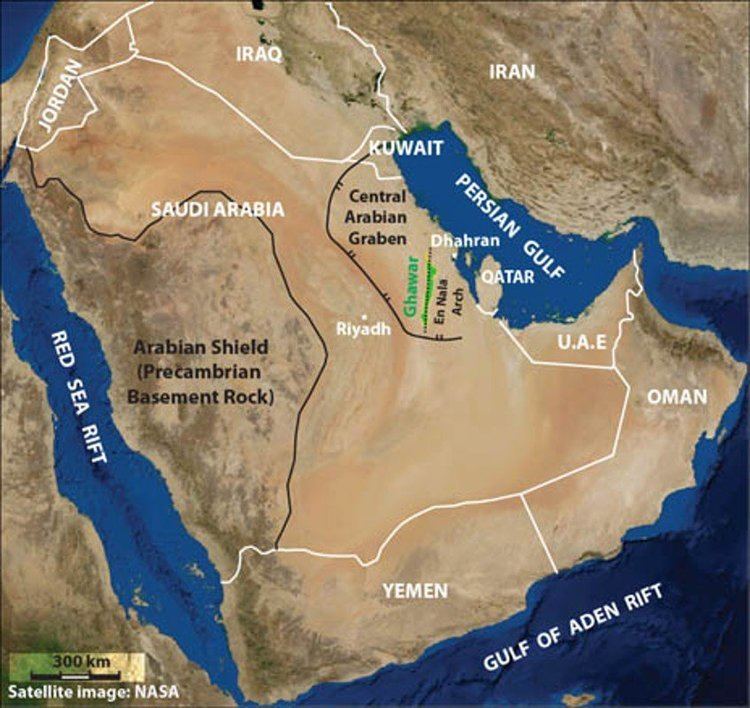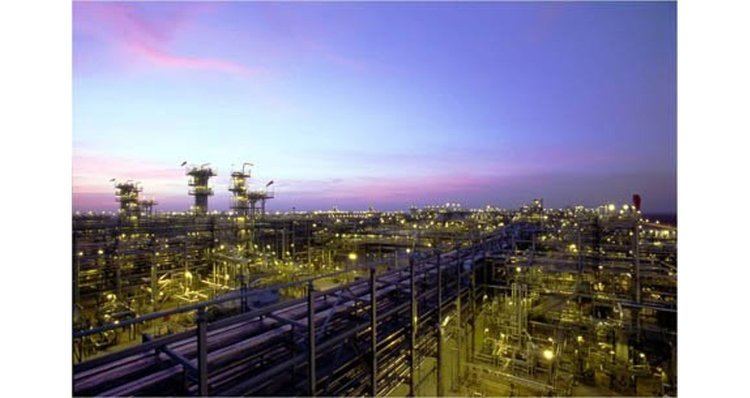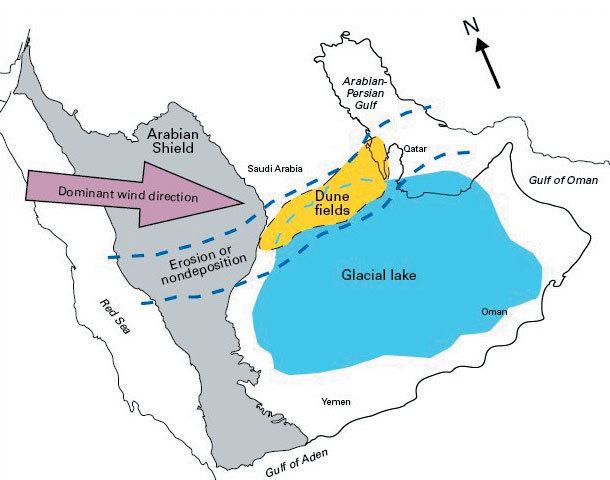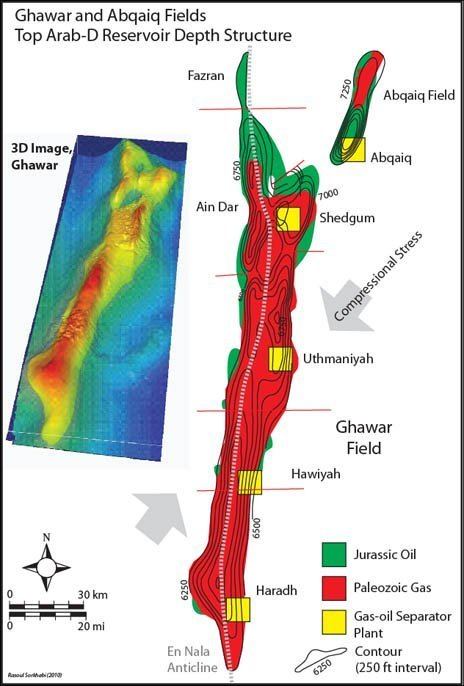Offshore/onshore Onshore Discovery 1948 Start of production 1951 | Location Al-Ahsa Peak year 2005 (Contested) | |
 | ||
Current production of oil 5,000,000 barrels per day (~2.5×10^ t/a) Current production of gas 2,000×10^ cu ft/d (57×10^ m/d) Region Eastern Province, Saudi Arabia | ||
Ghawar field presentation
Ghawar (Arabic: الغوار) is an oil field located in Al-Ahsa Governorate, Eastern Province, Saudi Arabia. Measuring 280 by 30 km (174 by 19 mi), it is by far the largest conventional oil field in the world, and accounts for more than half of the cumulative oil production of Saudi Arabia. Ghawar is entirely owned and operated by Saudi Aramco, the state run Saudi oil company. Relatively little technical information is publicly available, because the company and Saudi government closely guard field performance data and per-field production details. Available information is predominantly historical (pre-nationalization), from incidental technical publications, or anecdotal.
Contents

Ghawar field
Geology

Ghawar occupies an anticline above a basement fault block dating to Carboniferous time, about 320 million years ago; Cretaceous tectonic activity, as the northeast margin of Africa began to impinge on southwest Asia, enhanced the structure. Reservoir rocks are Jurassic Arab-D limestones with exceptional porosity (as much as 35% of the rock in places), which is about 280 feet thick and occurs 6,000-7,000 feet beneath the surface. Source rock is the Jurassic Hanifa formation, a marine shelf deposit of mud and lime with as much as 5% organic material (1% to 7% is considered good oil source rock). The seal is an evaporitic package of rocks including impermeable anhydrite.
History

Historically, Ghawar has been subdivided into five production areas, from north to south: 'Ain Dar and Shedgum, 'Uthmaniyah, Hawiyah and Haradh. The major oasis of Al-Ahsa and the city of Al-Hofuf are located on Ghawar's east flank, corresponding to the 'Uthmaniyah production area. Ghawar was discovered in 1948 and put on stream in 1951. Some sources claim Ghawar peaked in 2005, though this is strongly contested by the field operators.
Saudi Aramco reported in mid-2008 that Ghawar had produced 48% of its proven reserves.
Production

Approximately 60–65% of all Saudi oil produced between 1948 and 2000 came from Ghawar. Cumulative production through early 2010 has exceeded 65 billion barrels (1.03×1010 m3). It was estimated that Ghawar produced about 5 million barrels (790,000 m3) of oil a day (6.25% of global production) in 2009.
Ghawar also produces approximately 2 billion cubic feet (57,000,000 m3) of natural gas per day.

The operators stimulate production by waterflooding, using seawater at a rate said to be around 7 million gal./day. Water flooding is said to have begun in 1965. The water cut was about 32% in 2003, and ranged from about 27% to 38% from 1993 to 2003. By 2006, North Uthmaniyah's water cut was about 46%.
Reserves

In April 2010, Saad al-Treiki, Vice-President for Operations at Aramco, stated, in a news conference reported in Saudi media, that over 65 billion barrels (10.3 km3) have been produced from the field since 1951. Treiki further stated that the total reserves of the field had originally exceeded 100 billion barrels (16 km3).

The International Energy Agency in its 2008 World Energy Outlook stated that the oil production from Ghawar reached 66 Bbo in 2007, and that the remaining reserves are 74 Bbo.
Matthew Simmons, in his 2005 book Twilight in the Desert, suggested that production from the Ghawar field and Saudi Arabia may soon peak.
When appraised in the 1970s, the field was assessed to have 170 billion barrels (27 km3) of original oil in place (OOIP), with about 60 billion barrels (9.5 km3) recoverable (1975 Aramco estimate quoted by Matt Simmons). The second figure, at least, was understated, since that production figure has already been exceeded.
